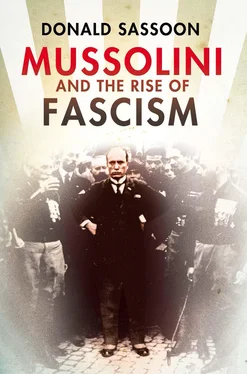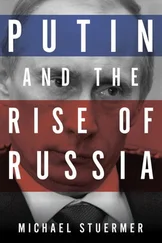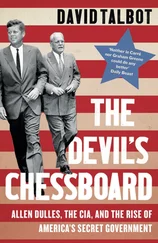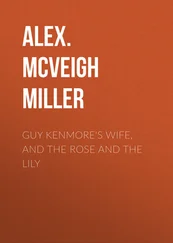General Pugliese had leaflets distributed to officers and soldiers:
In these grave hours everyone must bear in mind the oath of loyalty to the Sacred Majesty the King and to the Statute, fundamental law of the state which safeguards the freedom and the independence of Italy. No one has ever dared march against Rome, mother of civilisation, and suffocate the idea of freedom she represents.
You must defend Rome to the last drop of your blood and be worthy of her history.
Major–General Emanuele Pugliese, commander of the Division. 15
The marchers were left free to camp outside Rome. They numbered 30,000 to 40,000. They were amateur soldiers playing at revolution, poorly armed (hunting rifles, old army guns, little ammunition) and no match for regular troops – as the more aware among the marchers realised only too well. A diary kept by a student noted that the marchers were frequently reassured that the army would never fire upon them. 16 In turn the fascists were reminded by their leaders that ‘the Army is the supreme defender of the Nation’, that ‘it must not be involved in the struggle’, that fascism had high esteem for the army, and that ‘fascism does not march against the forces of public order’. 17 Indeed, troops were often used to provide food for the Blackshirts, pitifully soaked by the ceaseless rain.
Mussolini was perfectly aware of the weakness of his ‘troops’, which is why he took little interest in their military preparedness and efficacy, receiving only two messages from the marching fascists. 18 He had chosen to concentrate on the ‘political’ front, remaining aloof in Milan, almost as if to signal that he was not a postulant.
The tragicomic aspects of the March should not lead one to underestimate its political significance. The fascists occupied towns of the importance of Cremona, Pisa and Siena, and cut the telegraph and telephone wires connecting Pisa to Genoa and Florence. The link was quickly re–established, without diminishing the symbolic impact of the fascist advance. Cars and trucks were requisitioned and used to convey supporters towards Rome. Fascist activists were freed from the Bologna prison where they had been incarcerated. 19 Much of this encountered little opposition. The fascists had in fact been allowed to behave as a state within a state, parading uniformed supporters, talking openly of ‘seizing’ Rome, negotiating with local authorities and in some cases being welcomed by them. No left–wing force would have been allowed to behave like this. The legitimisation of the fascists could not have been more obvious.
So lacking in revolutionary secrecy was the preparation for the March that the chief conspirators, when they met a few weeks earlier in Bordighera on the Italian Riviera, were invited to lunch by Queen Margherita, the Queen Mother, whose villa was nearby and who openly sympathised with the fascists. 20
It is difficult to stage a coup against an army, particularly in the absence of civil war, desertion, economic catastrophe or widespread civil disorder. The March on Rome was little more than an ill–coordinated demonstration aimed at increasing the pressures on the politicians in Rome. Mussolini – who had considerable strategic flair – realised that much was to be gained by remaining broadly inside the limits of legality while permitting regular forays outside it. But such a strategy could only work if wider liberal opinion had been prepared to tolerate the fascists’ ambiguous attitude to legality.
The outgoing government of Luigi Facta had drafted a decree declaring a state of emergency which would have empowered the army to take drastic measures against the marchers. The King had been expected to sign it, but he refused. Instead he asked Mussolini, the leader of one of the smallest parties in Parliament, to form the next government.
When Mussolini arrived in Rome he was welcomed by a few hundred well–wishers. The reporter of the Corriere della sera – a paper that despised Mussolini but had come to regard him as an inevitable and necessary evil, indispensable to keep the socialists at bay – described the welcoming crowd as ‘immense’, the image enhanced by the description of women throwing flowers at the man of destiny. 21
The ‘march’ had not been in vain. It was part of a symbolic theatre aimed at highlighting the exceptional circumstances surrounding the Duce’s accession to power. Its purpose was not to conquer Rome but to provide the choreography, the necessary human material, for what was later glorified as la Marcia su Roma.
Thus at eleven on the morning of 31 October, Mussolini, a black shirt visible under his formal suit, as if to symbolise the two faces of fascism – respectability and barely concealed violence – turned up at the Quirinale Palace to receive his new appointment and submit the list of ministers who would serve in the new government. ‘I beg Your Majesty’s forgiveness,’ he said, ‘if I am still wearing my black shirt, but I come from a battle which, fortunately, has left no casualties… I am Your Majesty’s loyal servant.’ 22
The new government was a genuine coalition. The fascists were far too weak to hog for themselves the lion’s share of ministries. Apart from Mussolini – who kept the Foreign and Interior ministries – only three ‘real’ fascists obtained portfolios: Aldo Oviglio (Justice), Alberto De Stefani (Finance) and Giovanni Giuriati (in charge of ‘recently liberated lands’, i.e. those which had been under Austrian rule until the end of the Great War). There were also two members of the armed forces (General Armando Diaz at the War Ministry and Admiral Paolo Thaon di Revel at the Navy), one nationalist (Luigi Federzoni at the Colonies), one right–wing liberal (Giuseppe De Capitani at Agriculture), and two Catholics of the Partito popolare (Vincenzo Tangorra at the Treasury and Stefano Cavazzoni in charge of Labour and Social Security).
It looked almost like a ‘normal’ conservative government. Many of the ‘true’ fascists were disappointed, but the political elites were relieved. Mussolini’s deferential behaviour towards the institutions seemed to confirm their belief that, while mouthing revolutionary rhetoric, he would be able to check the black–shirted hotheads surrounding him.
He had, after all, repeatedly given signs of moderation. And when, on 3 August 1921, he had negotiated a pact (the patto di pacificazione) with the socialists aimed at bringing violence on both sides under control, he had irritated the more militant squadristi, people such as Dino Grandi, Italo Balbo and Roberto Farinacci, who did not hesitate to accuse him of being excessively accommodating. Faced with what amounted to an internal revolt he had threatened to resign, thereby resolving the crisis. 23 The opposition he had faced showed that his control was not yet absolute, but the incident played into his hands because it confirmed that, unlike his acolytes, he was a shrewd politician able to play on several registers at once.
With their man now Prime Minister, the foot–soldiers of fascism went home triumphantly, confident that this was the first stage of a revolution that would sweep throughout Italy, transforming the country. Many of their comrades, however, were quickly seduced by the charms of the political establishment they had sought to destroy. They began to experience the pleasures of wielding power, of being feared and envied, and of basking in the respect of those they had hitherto viewed with awe.
The old elites, of course, despised Mussolini, the son of a blacksmith and a schoolmistress. They were alarmed by his plebeian tones and his rough and populist language, yet they recognised him as someone prepared to do the dirty work they themselves were not able or willing to do. Some intellectuals openly admired him, or were not prepared to criticise him. The distinguished historian Gioacchino Volpe praised Mussolini well before the March on Rome. 24 Benedetto Croce, the most revered philosopher in Italy, sent his good wishes to the new Prime Minister, while keeping his distance. Writing in 1944 of his contacts with Mussolini, Croce, in what were essentially self–justificatory notes, while barely able to disguise his pleasure at being esteemed by the Duce, explained that he had refrained from ever meeting him because they just did not belong to the same social circles: ‘There were differences between us to do with differences of social milieu, family and culture; and I have always held the view that men get on together if they have had a similar education rather than if they share the same abstract ideas.’ 25
Читать дальше











